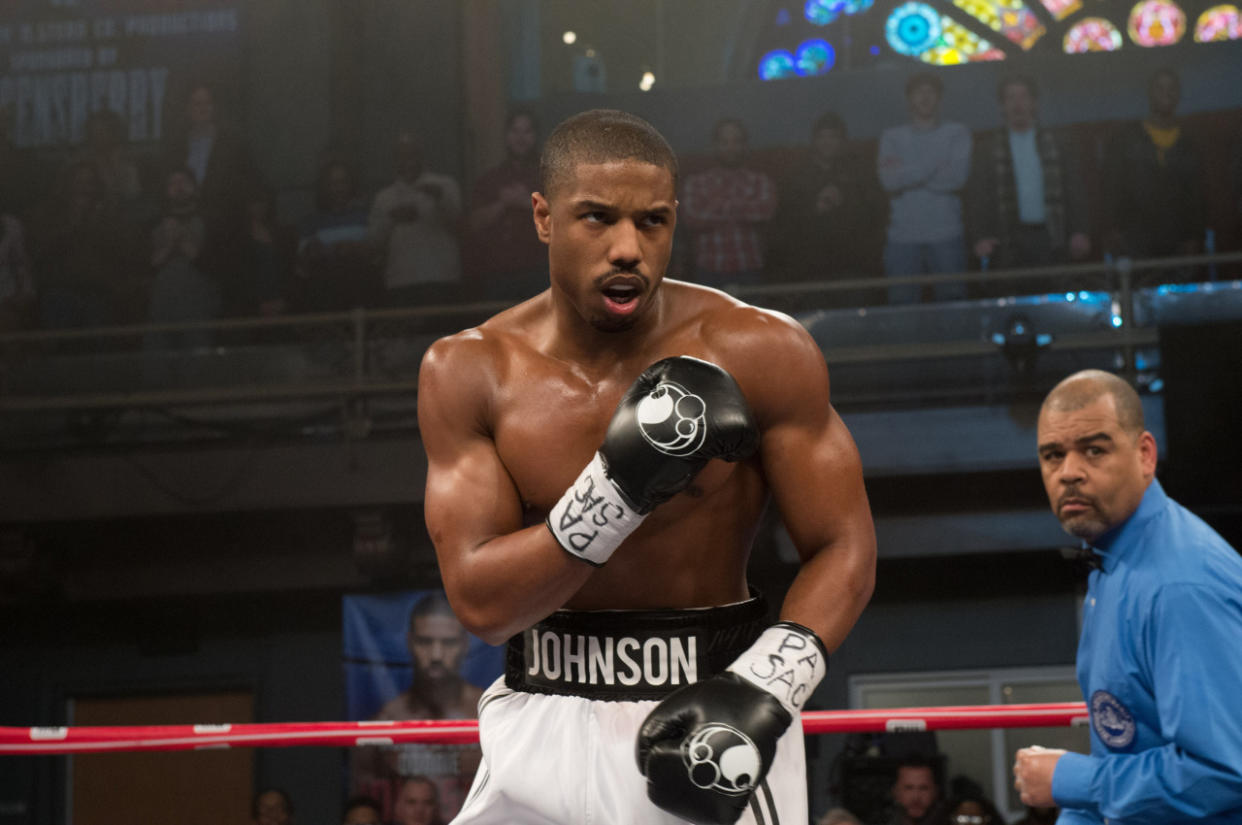That Dazzling Boxing Sequence in 'Creed' Really Was One Shot

Michael B. Jordan in ‘Creed’ (Barry Wetcher/Warner Bros. Pictures via AP)
By Kristopher Tapley, Variety
Extended single takes — or “oners,” as they’re often called — are fairly popular as of late. An exciting sequence in an episode from the first season of True Detective had people buzzing in early 2014. Last year’s best picture Oscar winner, Birdman, was photographed and edited to appear like one shot, while the year before, Gravity dazzled with its CG-assisted single takes. (Emmanuel Lubezki won the best cinematography Oscar for both.)
And this hasn’t been limited to American cinema, of course. Sebastian Schipper’s Victoria took things a step farther than Birdman by actually capturing the entirety of the film in one uninterrupted, unassisted take, while László Nemes’ Cannes prize winner Son of Saul tells a harrowing Holocaust story with a series of extended takes, unique in that they are all focused on the face of actor Géza Röhrig.
If you saw Creed over the weekend, you witnessed another example as an entire two-round boxing match is captured in one exciting take. Shockingly, given the editorial tools at the disposal of filmmakers today, there was no post-production stitching employed to connect a series of takes together and provide the effect of a single shot. “Everybody thinks we’re cheating, but that is one shot,” cinematographer Maryse Alberti says.
Related: Cinematographer Maryse Alberti on Distinguishing ‘Creed’ in the Footsteps of ‘Rocky’
The 25-year veteran might not have been the most obvious choice for Ryan Coogler’s Rocky spin-off, but in films like The Wrestler, she has shown a propensity for the kind of realism the 29-year-old filmmaker was after. That realism comes to a head in this riveting sequence.
“A movie like Raging Bull is gorgeous, but it’s not what we wanted to do,” Alberti says. “Ryan very much wanted to stay in the realm of reality and seeing the boxer alone in the ring. Once you’re in the ring, you don’t have teammates. You are alone. There’s no one to lean on. That was kind of the idea.”
Alberti, who shot the film digitally on the Arri Alexa camera, is quick to credit her steadicam operator, Ben Semanoff. He was tasked with physically pulling off the feat in the ring, moving from actor to actor as the intense choreography (courtesy of fight and stunt coordinator Clayton Barber) tells a story that builds to a breathtaking punctuation. Coogler shot 12 takes of the sequence, with the tenth take being the one used in the film.
Lighting, meanwhile, wasn’t a major concern given the environment. “Once you’ve lit a ring — and I’ve learned how to light a ring from John Duncan, who has a lot of experience in lighting live boxing events and did the lighting of the ring for us — it’s lit everywhere, evenly, if it’s well done,” Alberti says. “One of my concerns was that we’d be truly able to get close to the boxers without shadows … I was trying to always bring the camera back to the drama and the intensity of the face.”
There are actually a number of extended shots in the film, which Alberti says helps penetrate the inherent manipulation of filmmaking. And that, she surmises, is what you can achieve with a well-intended, well-executed oner.
“With one take, I think you don’t need to rely on movie editing to dictate emotion,” she says. “When it’s well done, when it’s not virtuosity, when it’s not too self-aware, it’s powerful. Sometimes the virtuosity of one take can take away from the richness, but in ‘Creed,’ you are in the ring with this boxer and I think it’s emotionally powerful.”
Related: Read the complete ‘Creed’ coverage
Watch a trailer from ‘Creed:’

